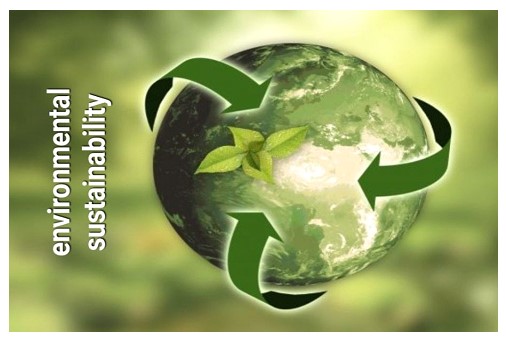Ass. Pro. Dr.: Israa Nasser Ghulam
Department of Biology
college of education for pure sciences
Environmental sustainability is one of the most important aspects of overall sustainability, and forms the basis for social well-being and economic development. This is done by protecting the environment and its resources, thus ensuring a healthy and stable future for all living beings. To achieve this kind of sustainability, we need a collaborative effort from governments, companies, organizations and individuals, as it is a shared responsibility [1].To strike a delicate balance between the needs of this generation to ensure that subsequent generations thrive in a healthy and vibrant environment. Environmental sustainability is of great importance for many reasons, including ensuring the preservation of biodiversity, and this is extremely important for the functioning of environmental systems and thus providing ecosystem services that support human life. It helps biodiversity regulate the climate, purify the air, and also purify water. harmful and others. In addition, environmental sustainability contributes to mitigating climate change by reducing greenhouse gas emissions and adopting renewable energy sources, which are necessary to reduce environmental pollution [2]. Achieving human well-being: A healthy environment is necessary for human health, and thus the quality of life is better. Environmental sustainability has important principles and represents the pillars to achieve them .Recycling, reducing waste, adopting practices that reduce consumption, and recycling the use of materials made it possible to achieve sustainability. Another pillar is the use of renewable energy and the transition to renewable energy sources such as solar, wind and hydroelectric energy to reduce carbon emissions and its derivatives. Also, sustainable agriculture and the use of alternative farming methods that conserve water and reduce the amounts of its use, enhance the quality and health of the soil, and reduce the use of chemicals. Finally, the preservation of natural resources and the prevention of over-exploitation and depletion of natural resources. Reduce, Reuse, Recycle: Minimize waste by adopting practices that prioritize reducing consumption, reusing materials, and recycling whenever possible. Despite the many benefits of this topic, the application of sustainability faces many difficulties , Limited information and education about sustainability hinders sustainable practices [3].
Programs to implement sustainability, particularly those used by companies adopting short-term, profitable programs, usually cause economic pressure [4]. Other factors related to resources and technology: play an important role in the implementation of sustainable solutions [5]. Balancing different environmental, social, and even economic goals may lead to the dominance of one group over another [6]. In order to achieve environmental sustainability, let us start with what is possible and we can achieve it as individuals, including reducing waste and reducing single-use products, saving energy by using energy-saving devices, using electronic documents instead of paper, afforestation is a necessity to combat the climate and adopt innovative ways to reduce waste in water because it is one of the most important features of sustainability environmental.
Reffrence :
⦁ World Wildlife Fund (WWF). (2020). Living Planet Report 2020 – Bending the Curve of Biodiversity Loss. WWF International.
⦁ United Nations Framework Convention on Climate Change (UNFCCC). (2015). Paris Agreement. https://unfccc.int/process-and-meetings/the-paris-agreement/the-paris-agreement.
⦁ Wiek, A., et al. (2012). The problem with problem solving: promoting transition instead of “solutioning”. Sustainability Science, 7(1), 95-116.
⦁ Schaltegger, S., et al. (2012). The business case for corporate sustainability:: Literature review and research options. European Management Journal, 30(6), 329-341.
⦁ Berkhout, F., et al. (2010). Sustainability transitions: An emerging field of research and its prospects. Research Policy, 39(4), 430-438.
⦁ Nilsson, M., et al. (2012). Mapping the Field of European Public Health Research: A Scientometric Analysis of European FP6 and FP7 Research Programmes. European Journal of Public Health, 22(1), 95-100.






























































